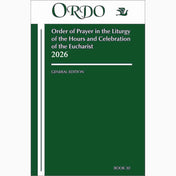From the desk of the Tar Heel disciple:
October 8, 2025
The month of October opens with the feast of the much-loved St. Thérèse of Lisieux, who died as a result of tuberculosis, in 1897, at the tender age of 24. She is, of course, affectionately known throughout the world as the “Little Flower.” Despite her cloistered life in a Carmelite monastery, so great was the devotion to her around the world that Pope Benedict XV, in 1914, dispensed from the legislation at the time that required a 50-year waiting period between the death and the opening of the cause for canonization of anyone.
She was subsequently beatified in 1923 and canonized in 1925, only 28 years after her death. Her autobiography, The Story of a Soul, has helped lead many people to holiness.
In 1997, Pope St. John Paul II declared her a doctor of the church, only the third woman at the time to be so proclaimed. St. Teresa of Avila and St. Catherine of Siena were declared to be doctors of the church by Pope St. Paul VI, in 1970, and St. Hildegard of Bingen was canonized and declared a doctor by Pope Benedict XVI, in 2012.
To date, these four holy women are the only female doctors of the church. In total, there are 37 men and women whose contributions to theology and doctrine have been considered by the Holy See significant enough to deserve this honorific. Most recently, Pope Leo XIV has announced his intention to declare St. John Henry Newman a doctor of the church, on the upcoming Solemnity of All Saints, November 1, 2025. This blog has previously written about this esteemed and holy man (see August 5, 2025), whose canonical process toward this title has been advanced by the four most recent successors of St. Peter: Pope St. John Paul II, who declared him “venerable” in 1991, Pope Benedict XVI, who beatified him (in England) in 2010, Pope Francis, who canonized him in 2019, and now, by Pope Leo XIV with the announcement of this impending recognition.
Newman died in 1890, at the age of 89, only seven years before the death of his much younger co-religionist, the Little Flower. Newman was recognized by the world as a scholar and intellectual during his life. Thérèse was barely known outside of the convent during her lifetime. Newman's literary output is voluminous; that of Thérèse is minimal. Yet both have contributed greatly to the life of the church. Their writings should not only be admired, but read with devotion. They can lead us to greater union with God!
PS. Perhaps October will one day celebrate yet another doctor of the church, if and when Pope St. John Paul II, whose feast is October 22, be so declared, as is desired by so many.
Reading and devotional material related to St. Thérèse
Rosaries and reading material about this devotion





